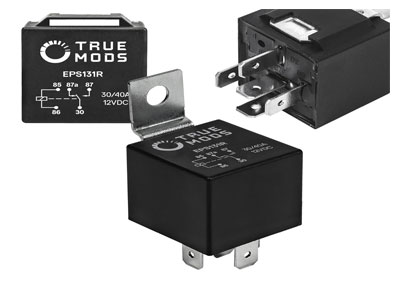Key Takeaway
A 5-pin relay is often referred to as a “Bosch style” relay. This type of relay is also known as a 5-prong, SPDT (Single Pole Double Throw), or changeover relay. The SPDT configuration allows it to switch between two different circuits, making it extremely versatile. This relay is commonly used in automotive and industrial controls to manage electrical loads that require switching between two states, providing reliable operation across various applications.
Introduction to 5 Pin Relays
A 5 pin relay is called a Single Pole Double Throw (SPDT) relay. This type of relay has five terminals, allowing it to control two different circuits with one switch. The five pins include the common terminal (COM), normally closed terminal (NC), normally open terminal (NO), and two coil terminals. When the relay coil is energized, the internal switch moves from the normally closed position to the normally open position, enabling the control of two separate circuits. This versatility makes 5 pin relays ideal for a wide range of applications, from automotive to industrial systems.

SPDT Relay Configuration
The SPDT (Single Pole Double Throw) relay configuration of a 5 pin relay involves a single common terminal that can be connected to either of two outputs. The relay has three main connections: the common terminal (COM), the normally closed (NC) terminal, and the normally open (NO) terminal. When the relay is not energized, the common terminal is connected to the normally closed terminal. When the relay coil is energized, the connection switches to the normally open terminal. This switching mechanism allows for control over two different circuits, providing flexibility in switching operations.
For example, in a lighting system, a 5 pin relay can switch between different lighting modes. When the relay is not energized, the common terminal might connect to the NC terminal, powering a set of lights. When the relay is energized, the connection shifts to the NO terminal, switching to another set of lights. This capability makes SPDT relays invaluable in scenarios where devices need to be turned on under one condition and off under another, such as in automated control systems, HVAC units, and other electrical systems requiring precise control.
You May Like to Read
Applications of 5 Pin Relays
5 pin relays are used in various applications due to their flexibility and reliability. In automotive systems, they are often used to control headlights, horns, and other electrical accessories. For example, a car’s headlight system can use a 5 pin relay to switch between high and low beams. When the relay is energized, it connects the circuit to the high beams; when de-energized, it defaults to the low beams. This ensures a smooth transition and reliable operation of the vehicle’s lighting system.
In industrial automation, 5 pin relays are employed to switch between different control circuits, providing a reliable method for managing multiple processes. They are also found in home automation systems, where they control lighting, heating, and security systems. For instance, a home automation system might use a 5 pin relay to control a security light that turns on when motion is detected and off otherwise. The ability to manage multiple circuits with a single relay makes them invaluable in complex control systems that require precise and reliable switching. Their widespread use in various industries underscores their versatility and effectiveness as a key component in modern electrical and electronic systems.
Wiring Diagrams
Wiring a 5 pin relay correctly is essential for its proper operation. The common terminal (COM) is connected to the load, the normally closed terminal (NC) is connected to one circuit, and the normally open terminal (NO) is connected to another circuit. The two coil terminals are connected to the control voltage, which energizes the relay. When the relay is energized, the internal switch moves from the NC terminal to the NO terminal, thereby switching the circuit.
Following the wiring diagram provided by the manufacturer is crucial to avoid incorrect connections and ensure safe operation. These diagrams typically include the specific arrangement of the pins and the connections required for both normally open and normally closed configurations. For example, in an automotive lighting system, the COM terminal might connect to the headlight, the NC terminal to the low beams, and the NO terminal to the high beams. The coil terminals would connect to the control switch in the vehicle. Accurate wiring ensures that the relay functions correctly and safely within the system, preventing potential malfunctions or electrical hazards.
Advantages of 5 Pin Relays
The advantages of 5 pin relays include their ability to control multiple circuits with a single device, their reliability, and their versatility. The SPDT configuration allows for flexible control options, enabling the relay to switch between two different circuits easily. This makes them ideal for applications requiring conditional switching, such as automotive lighting systems where the same relay can control both the high and low beams.
Additionally, 5 pin relays are durable and can handle high currents, making them suitable for both low and high-power applications. Their robust construction ensures long-term reliability, even in demanding environments. For instance, in industrial settings, 5 pin relays can be used to manage various machinery operations, switching between different control circuits as needed. Their widespread use across different industries underscores their effectiveness and reliability as a switching solution. By providing precise control and enhancing system flexibility, 5 pin relays are an indispensable component in modern electrical and electronic systems.
Conclusion
Understanding 5 pin relays involves recognizing their configuration, applications, and advantages. Known as SPDT relays, these devices are crucial for controlling multiple circuits with precision and reliability. Their flexibility in switching, coupled with their robustness, makes them indispensable in automotive, industrial, and home automation systems. For newly joined engineers, mastering the use of 5 pin relays is essential for designing and maintaining efficient and versatile control systems. By comprehending their wiring, operation, and benefits, you can leverage 5 pin relays to enhance the functionality and reliability of your electrical projects.
